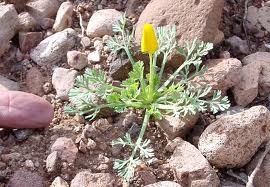Poppy Gardening 101
by Ann Waskosky
Plant Sciences 211, NDSU
NDSU, Fall 2010
Home | Characteristics | References
Introduction
I feel as though many people overlook poppies often. There is such a wide variety of poppies, it's hard to figure out why they aren't more common. Poppies come from the Papaver family. Poppies come in many, many varieties, and are native to many parts of the world, including Central and Southern Europe, China, India, and other parts of Asia. It's popularity also stems from the diversity of it's use. In the garden, Poppies are an attractive, easy to grow flower in both annual and perennial varieties. As an added bonus, the home gardener can choose from almost any color in the rainbow , including black. It's flowers are long lasting. Here are some helpful little tidbits about these wonderful and beautiful flowers.
Propagation

Poppy is grown from seed. They can be sown directly in the garden or started indoors.Start Poppy seeds indoors six to eight weeks before the last frost in your area. We recommend planting them in separate pots, allowing ample room for root growth. This will make transplanting easier. For best results, transplant while still small.
How to Grow Poppies
I believe poppies are not hard to grow. It takes just as much time and effort as any other plant.
First, they prefer full sun to partial shade. Place your poppies where the sun can hit them very clearly or have a small tree next to them.
Also, they will grow well in many types of soils and tolerate dry spells well. Final spacing of plants should be 8" - 18", depending upon variety. The plants will grow 2- 2/12 feet tall.
Poppies look superb planted together in big beds. Poppy will grow quickly and will bloom in early to mid summer. Fertilize them once a month to promote steady growth. Mulching around the plants will help to keep weeds down and make the bed more attractive.
A little FYI: Poppy are fairly resistant to insects and disease. If insect or disease problems occur, treat early with organic or chemical insect repellents and fungicide.
 |
Poppies can come in almost any color! |
 |
Poppies have been used as an expectorant in cough syrups and as an infusion to treat ear and toothaches. |
 |
Poppies were used in The Wonderful Wizard of Oz to create magical poppy fields, dangerous because they caused those who passed through them to sleep forever. |